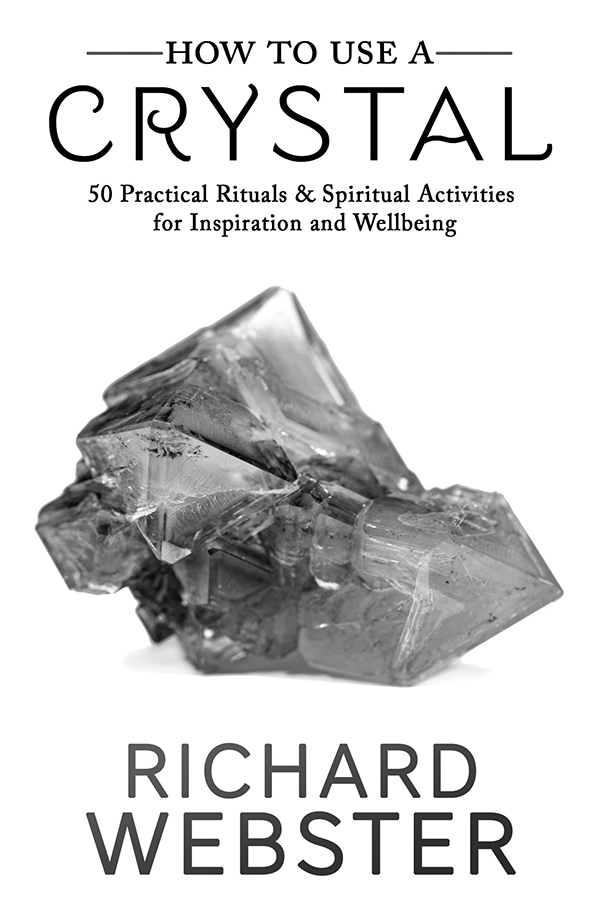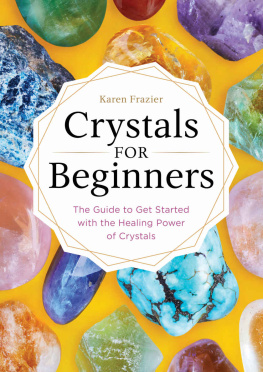Richard Webster was born and raised in New Zealand. He has been interested in the psychic world since he was nine years old. As a teenager, he became involved in hypnotism and later became a professional stage hypnotist. After school, he worked in the publishing business and purchased a bookstore. The concept of reincarnation played a significant role in his decision to become a past-life specialist. Richard has also taught psychic development classes, which are based on many of his books.
Richards first book was published in 1972, fulfilling a childhood dream of becoming an author. Richard is now the author of over a hundred books, and is still writing today. His bestselling books include Spirit Guides & Angel Guardians and Creative Visualization for Beginners .
Richard has appeared on several radio and TV programs in the United States and abroad. He currently resides in New Zealand with his wife and three children. He regularly travels the world to give lectures, hold workshops, and continue his research.

Llewellyn Publications
Woodbury, Minnesota
Copyright Information
How to Use a Crystal: 50 Practical Rituals and Spiritual Activities for Inspiration and Wellbeing 2018 by Richard Webster.
All rights reserved. No part of this book may be used or reproduced in any matter whatsoever, including Internet usage, without written permission from Llewellyn Publications, except in the form of brief quotations embodied in critical articles and reviews.
As the purchaser of this e-book, you are granted the non-exclusive, non-transferable right to access and read the text of this e-book on screen. The text may not be otherwise reproduced, transmitted, downloaded, or recorded on any other storage device in any form or by any means.
Any unauthorized usage of the text without express written permission of the publisher is a violation of the authors copyright and is illegal and punishable by law.
First e-book edition 2018
E-book ISBN: 9780738756929
Book design by Bob Gaul
Cover design by Kristi Carlson
Editing by Annie Burdick
Llewellyn Publications is an imprint of Llewellyn Worldwide Ltd.
Library of Congress Cataloging-in-Publication Data (Pending)
ISBN: 978-0-7387-5670-7
Llewellyn Publications does not participate in, endorse, or have any authority or responsibility concerning private business arrangements between our authors and the public.
Any Internet references contained in this work are current at publication time, but the publisher cannot guarantee that a specific reference will continue or be maintained. Please refer to the publishers website for links to current author websites.
Llewellyn Publications
Llewellyn Worldwide Ltd.
2143 Wooddale Drive
Woodbury, MN 55125
www.llewellyn.com
Manufactured in the United States of America
Contents
p
Chapter 1:
Chapter 2:
Chapter 3:
Chapter 4:
part 2:
3: CENTERING AND
BALANCING YOURSELF
: Stone Suggestions
: Additional Crystals by Use
: Crystals by Color
: Stones Not to Use in Water
: What to Do if You Lose Your Crystal
For my good friend
Lary Kuehn
Who knows more about
crystals than anyone else Ive ever met.
The publisher and author assume no liability for any injuries caused to the reader that may result from the readers use of content contained in this publication. Please note that the information in this book is not meant to diagnose, treat, prescribe, or substitute consultation with a licensed healthcare professional. Both the author and the publisher recommend that you consult a medical practitioner before attempting the techniques outlined in this book. Gemstones and crystals should be used externally only. Do not place them in any liquid that you plan to drink. Please use your common sense, avoid anything you may be allergic to, and remember the real magic is inside you.
INTRODUCTION
E very now and again, people ask me what they can do with a crystal. Usually the question comes from someone whos been given a crystal or happened to buy one, but occasionally I get asked this question by people whove been involved with crystals for many years.
I used to suggest that they spend time with their crystal, get to know it, and then ask it how it wants to be used. I could see in their faces that this wasnt particularly helpful, and I was forced to come up with a better reply.
Now when people ask me what they can do with their crystal, I ask them what they would like to do with it. Some people have a clear answer, and I can help them get started with whatever it happens to be. Most people arent sure, and I recite a list of possibilities: Health, love, money, creativity, spiritual growth, forgiveness, luck, and your home.
Usually thats enough to get people started, and I feel just as excited as they are when they decide what theyre going to do.
This book developed from that list of possibilities. There are fifty suggestions here, and I hope youll find some that appeal to you.
All you need is one crystal.
Part 1

Some Crystal Basics

CRYSTALS AND GEMSTONES
T here is so much to learn about the stones we admire and love. Here we will take a look at the differences between crystals and gemstones, as well as their historical and modern uses. I will also share a bit about how I was first introduced to their gifts and how we can make use of the wonderful energy they have to share.
Historical Use
Throughout history, people have been fascinated with crystals and gemstones. Because of their beauty, they were probably originally worn for decorative purposes, but it wouldnt have taken long for people to discover their spiritual aspects, as crystals can provide serenity and peace of mind. Using crystals for divination and healing would have been a logical extension of this.
Because crystals have always been valuable, people of influence wore them as symbols of power and authority. Its recorded in the book of Exodus that Aaron, the High Priest of Israel, wore a twelve-jeweled breastplate. One of the jewels was an amethyst. Today, bishops in the Catholic Church usually have an amethyst in their episcopal rings. A kings crown is bedecked with precious gemstones to help him rule wisely and to demonstrate his supremacy. Stones and crystals were also valued by the ancient Sumerians, Mesopotamians, and Egyptians. A 7,500-year-old gold and turquoise bracelet was found adorning the mummy of an ancient Egyptian queen (Knuth 1999, 1).
The first serious study of crystals appeared in about 300 BCE. This was called On Stones , and was written by Theophrastus, a student of Aristotle. Scientific study of crystals began in 1546, when Georgius Agricola published his De Natura Fossilium . Ten years later, De Re Metallica was posthumously published, and it was used by the mining industry for more than two hundred years. In 1837, James Dwight Dana (1813-1895), an American scientist, suggested a system of mineral classification based on structure and chemical makeup in his book System of Mineralogy .






















